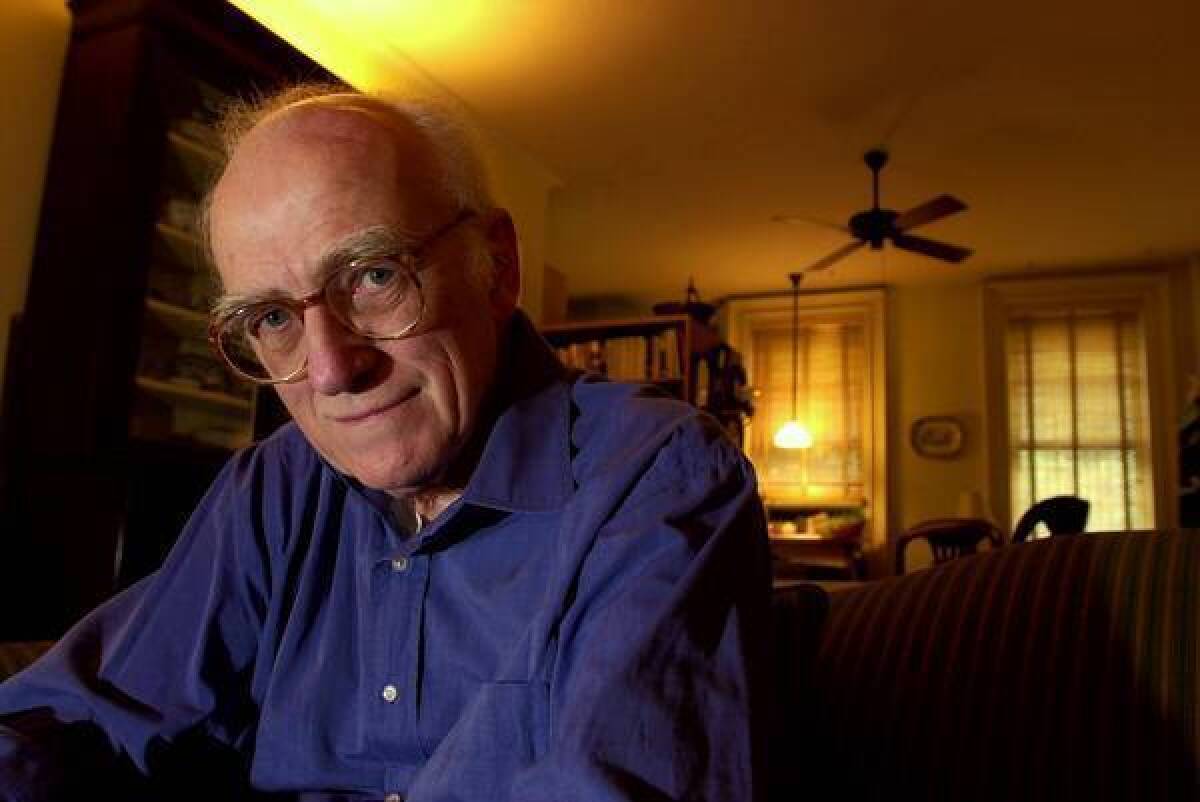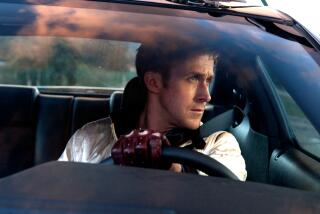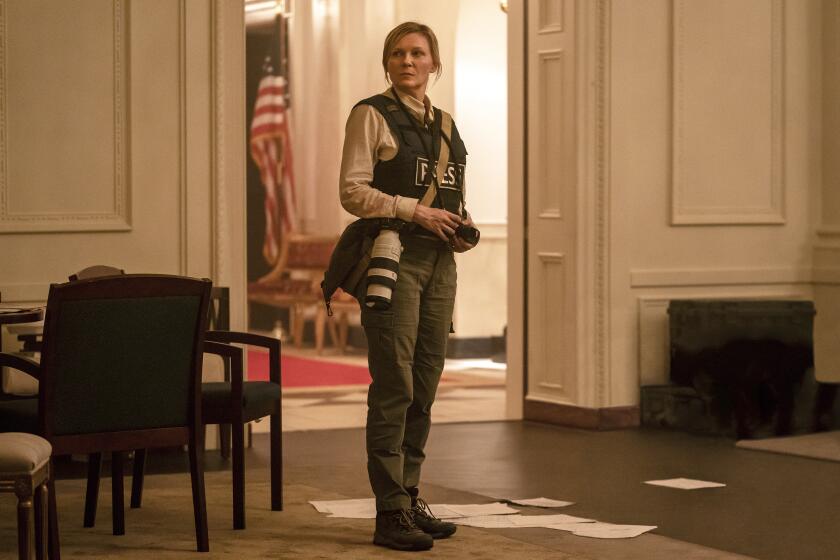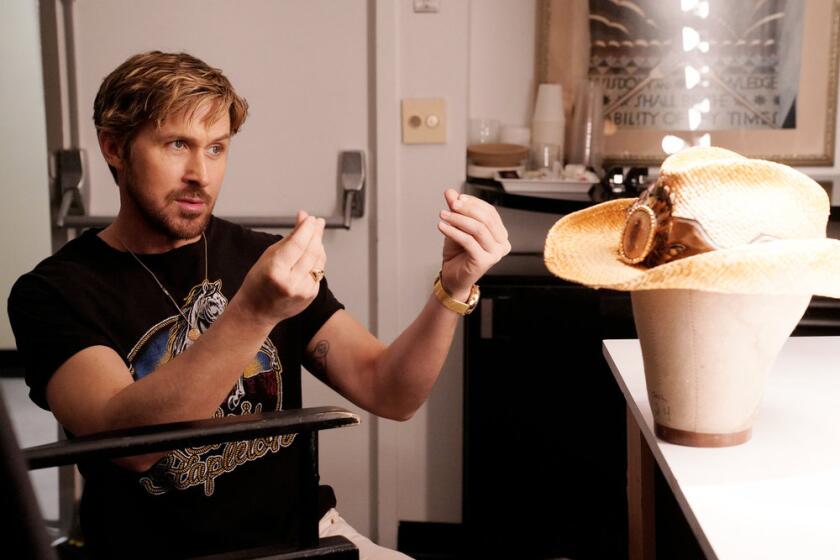Taylor Hackford on the challenges of bringing Parker to the big screen

Donald E. Westlake’s greatest literary creation, Parker, was first played on-screen by Lee Marvin in “Point Blank” (1967). Marvin’s collaboration with first-time feature director John Boorman was wonderfully fertile, giving birth to some indelible cinematic moments. Boorman encouraged Marvin to remain so silent, to suppress his intentions so deeply, that costar Angie Dickinson became totally frustrated in their scenes. Finally, Boorman encouraged Dickinson to unleash her anger by physically attacking Marvin.
The resulting scene is legendary: Dickinson (as the criminal’s sister-in-law) slaps Marvin’s face over and over, but Marvin won’t respond. She then pounds on his chest until all her energy gives out. Finally, an exhausted Dickinson collapses on the floor. The moment is stunningly real and surprisingly sexy. Without a word, Marvin maintains total control, embodying the hard-boiled intensity that Westlake chiseled into the title character of his 24 Parker novels (all published under his pseudonym, Richard Stark — more on that later).
FOR THE RECORD:
Donald E. Westlake: An article in the Jan. 20 Calendar section about bringing author Donald E. Westlake’s character Parker to the big screen said that Westlake had been voted Grand Master by the Mystery Writers of America and that it was an award given to only three writers. It should have said that Westlake was one of the few writers to have won Edgar awards in three different categories. The Grand Master honor itself has been given to more than 50 people. —
Marvin’s performance — perhaps the best of his career — set a high standard for the many future Parkers on-screen: Robert Duvall (“The Outfit”), Jim Brown (“The Split”), Peter Coyote (“Slayground”), Mel Gibson (“Payback”) and even a woman, Anna Karina (“Made in the USA”).
None were called Parker.
VIDEO: The Envelope - Directors Roundtable
Likewise, many filmmakers in addition to Boorman and Godard have been seduced by Westlake’s cinematic style: Peter Yates, Gower Champion, John Flynn, Brian Helgaland, Steven Soderbergh and Costa-Gavras to name just a few. Twenty of his more than 100 novels have been adapted for the big and small screens.
This week, my film “Parker” joins that long line of Westlake adaptations, the first time any film has been allowed to use this famous literary character’s name. When I read John McLaughlin’s screenplay adaptation of Westlake/Stark’s “Flashfire,” I was mightily impressed. Regardless of how “cinematic” a novel may be, it needs to be artfully adapted to the screen, and happily, John had been inspired by Westlake’s style, not slavishly bound to it.
His creative additions stirred my interest, but there still remained a thorny problem: Who could play the lead role? There are many wonderfully talented actors, but not many are able to embody Parker’s unique, quiet, cunning persona.
Fortuitously, I heard that Jason Statham had read the script and had expressed guarded interest. Of course, Jason is English, while Parker is American, but that didn’t bother me. I was looking for an actor who naturally possessed many of the indelible qualities that Westlake had imbued into his hard-boiled criminal protagonist. I had seen Jason’s early work in “Lock Stock & Two Smoking Barrels,” and I’d also heard that he’d hustled card games on the streets of London, so he was no stranger to society’s underbelly. Finally, I knew that he had been an Olympic diver, which told me volumes. Divers are notorious perfectionists.
When I met with Jason, I discovered he is more than just a “hard man.” Like his literary counterpart, he possesses a subtle wit that can be disarming. Most importantly, Jason carries himself in life with the same quiet authority that Westlake wrote into the Parker character. He’s a real bloke.
PHOTOS: David L. Ulin’s top 10 books for 2012
Master in the making
So having made a commitment to begin a new Parker adaptation, I started thinking seriously about Westlake’s brilliant but underappreciated literary character. To start with, the Mystery Writers of America’ voted him their highest honor: Grand Master, awarded to only three writers.
Like any “Master,” his style didn’t spring from the cradle; it evolved from hard work and experimentation. Raised in Albany, N.Y, he started writing at 11 and continued to struggle to find his voice while attending three universities (he never graduated) and a stint in the Air Force. His first professional job was working for the Scott Meredith Literary Agency. Meredith championed pulp fiction; Westlake decided to focus on crime fiction and made it his life’s work.
Around 1960, he signed a contract with Random House to deliver one mystery novel a year. This would be dream come true for most fledging novelists, but not Westlake. He was on fire — writing several novels at one time and wanting to expand his audience. Now, the publishing world doesn’t like a writer to be too prolific … having your name on too many books at the same time can “confuse the marketplace.” Westlake was unfazed — he’d just write in a different style under a pseudonym.
In those days, the accepted wisdom was that women bought hardback books and men bought paperbacks, so Westlake decided to go after the “machos.” And because he’d mined his humor and charm in his early Random House novels, he decided to change his style completely: “I wanted the language to be very stripped down and bleak, no adverbs … very stark. That’s how I chose the pseudonym’s last name: Stark. The first name I took from Richard Widmark, a hero of mine.”
Thus, the Parker series was born in 1962 with “The Hunter.” Except that it wasn’t planned as a series of novels. “Like everyone else,” Westlake once explained, “I believed that the good guys should be rewarded and the bad buys punished, so at the end of ‘The Hunter,’ I had Parker going to jail. When my agent sent the book out to paperback publishers, I got no takers. Then I heard from an editor named Buckland Moon, who said that if I could somehow change the ending so Parker could go free, he would give me a contract for three Parker books a year.” On his website, you can see Westlake smile slyly as if to say: money talks.
PHOTOS: Celebrity portraits by the Times
Moon inadvertently freed Westlake from having to write a “do right” protagonist. Though Dashiell Hammett and Raymond Chandler did create tough, morally ambiguous heroes, their characters possessed the proper quotient of guilt and moral outrage when crimes were committed. That’s why the two authors became so popular in Hollywood: The lead characters in the film adaptations of their work may have struggled with personal demons, but they ultimately fought against the forces of evil, which satisfied America’s puritan ethic.
There’s absolutely no puritan ethic in Westlake’s Parker. Under no circumstances could he be called a hero. Parker is a professional criminal who’s dedicated to stealing as much money as possible and he does so without remorse. That he usually steals from people or companies that can afford it or are insured has more to do with pragmatism than any Robin Hood idealism. Likewise, he can dish out violence ruthlessly if the situation requires it, but he is not a psychopath who enjoys hurting people.
His pragmatism rules the day. If an innocent bystander gets killed, there will be community outrage and law enforcement will be empowered to turn up the heat. But if no one’s hurt, the insurance company pays, and the investigation winds down.
So why should audiences want to spend time with this sociopath? Westlake’s genius was that he gave Parker his own set of rules — rules he sincerely believes in. He never cheats on these rules, but if someone he’s working with does violate them, he’ll go to the ends of the earth to put things right. In my film, Jason/Parker responds to his mentor, Hurley, played by Nick Nolte: “I won’t let chaos take over my life … nobody likes chaos.” That’s what makes Parker strangely compelling. Even when his quest “to put things right” doesn’t make sense, he won’t back down.
What also makes Parker so cinematic is his silence. He observes everything around him and uses his knife-edge intelligence to analyze and reanalyze every situation. He doesn’t speak until he knows what he’s going to do. Then he acts with speed and authority.
Of course, Parker doesn’t dance alone. Westlake created wonderful supporting characters, and “Flashfire” (the source novel for “Parker”) is no exception. I cast Jennifer Lopez in the costarring role and she’s going to surprise a lot of people as this sad divorcée, pushing 40 who is so financially strapped that she’s had to move back in with her mother, played by Patti LuPone.
The sharp eye and keen intelligence of Lopez’s Leslie tip Parker’s hand, so he either has to kill her or take her on as his partner. Nolte, Michael Chiklis, Wendell Pierce, Clifton Collins, Bobby Cannavale and Emma Booth are on this dance card — making for a memorable ensemble.
I’ve always loved genre movies, but “Parker” is the first one I’ve directed. I know I’ll be judged by Westlake’s millions of readers, as well as all the movie fans captured by the many screen versions of his novels, but so be it. I’m happy to have my film take its place alongside all the other Westlake adaptations. I’m proud to be in that company.
Hackford has directed many films, including “An Officer and a Gentleman,” “Against All Odds,” “The Devil’s Advocate” and “Ray.”
PHOTOS AND MORE
VIDEO: The making of ‘Argo,’ ‘Les Miz’ and more
ENVELOPE: The latest awards buzz
PHOTOS: NC-17 movies: Ratings explained
More to Read
Only good movies
Get the Indie Focus newsletter, Mark Olsen's weekly guide to the world of cinema.
You may occasionally receive promotional content from the Los Angeles Times.






